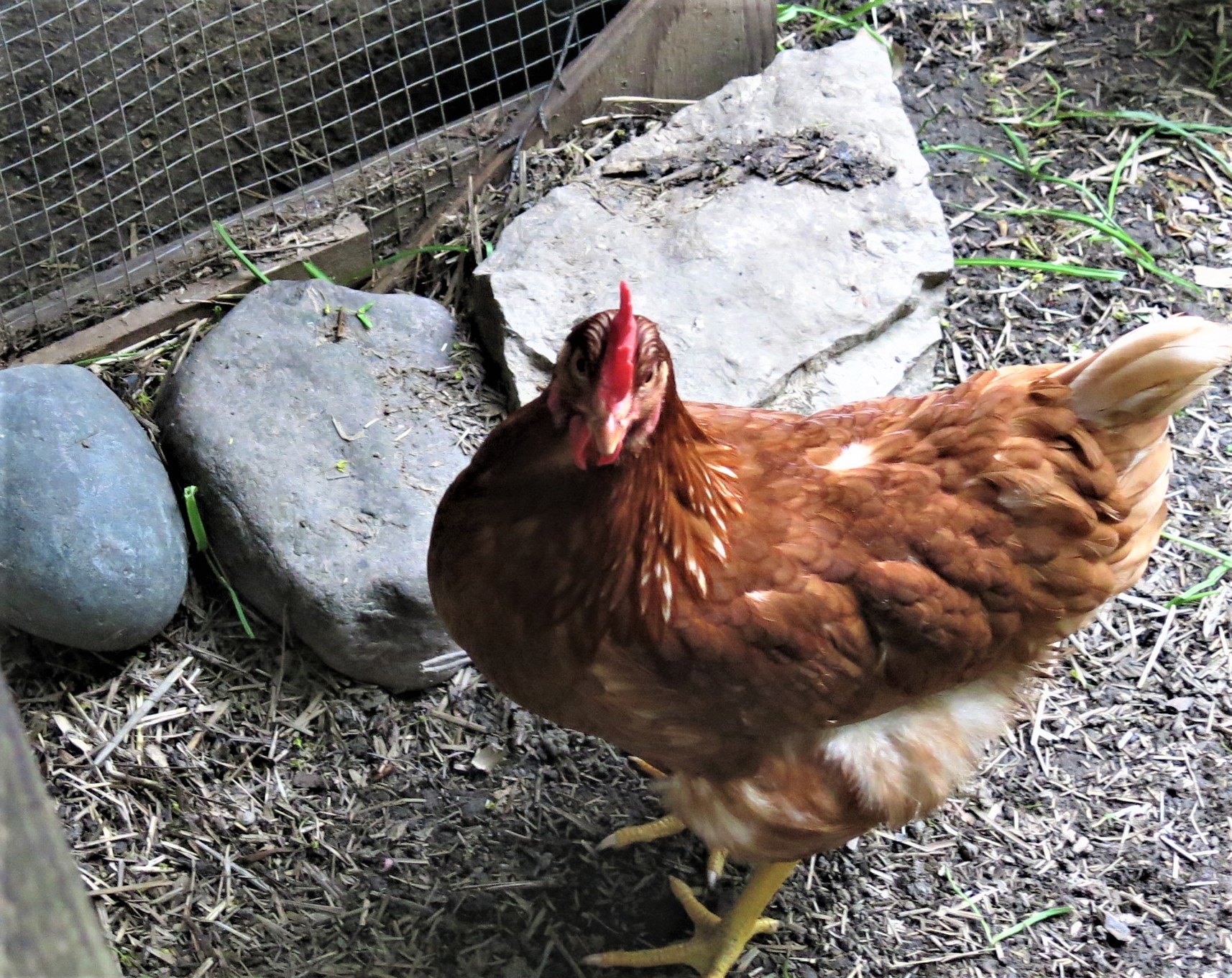Urban backyard hens
 URBAN BACKYARD HENS
URBAN BACKYARD HENS
Concerns and Benefits
A peer-reviewed study that looked at the laws of the largest 100 U.S. cities by population found that 94% of the largest cities in the U.S. allow chickens in some manner.
(Source: “Illegal Fowl: A Survey of Municipal Laws Relating to Backyard Poultry and a Model Ordinance for Regulating City Chickens,” by Jaime Bouvier, Environmental Law Institute, 2012)
CONCERNS:
NOISE:
Roosters make noise, but hens are quiet. Hens make clucking noises for a brief period of time after they’ve laid an egg (perhaps they’re proud!). The noise inside a large-scale agricultural chicken barn, with hundreds of hens (unlike a backyard coop, with only a few hens) measures at between 60 and 70 Decibels, the same level as human conversation. For comparison, dogs barking measure at around 100 Decibels. Ban roosters, not hens. Roosters are not necessary for hens to produce eggs.
(Source: “Protecting Against Noise,” Agricultural Health and Safety Program, The Ohio State University Extension, https://ohioline.osu.edu/factsheet/aex-59134)
PESTS:
Rats are attracted to human garbage, bird feeders, dumpsters and many other common urban features. Properly managed chicken feed (for example, pest-proof containers) can minimize issues with the rats that already exist within the urban environment. An enabling bylaw for backyard hens should include provisions around feed management to mitigate risks, and existing property standards bylaws can be used to address any problems that may arise.
ODOURS:
A properly managed coop, with regular cleaning and proper ventilation, will not produce odours. (Backyard coops with a few hens are entirely different from intensive farming operations housing hundreds of hens.) An enabling bylaw for backyard hens could include provisions around cleaning and ventilation.
(Source: The Backyard Homestead Guide to Raising Farm Animals, by Gail Damerow, 2011)
WASTE:
One hen produces approximately ¼ lb of manure a day. By comparison, the average dog produces three times that amount (3/4 lb). In the same way as dog and cat owners manage waste, hen keepers also manage waste. (Composting it is an excellent option that produces a nutrient-rich compost quickly and without odour when chicken manure is combined in the compost bin with carbon-rich materials such as straw, dead leaves or newspaper.) An enabling bylaw should include provisions around waste management.
(Source: Ohio Livestock Manure Management Guide, https://agcrops.osu.edu/sites/agcrops/files/imce/fertility/bulletin_604.pdf)
DISEASE:
Public health units (such as Vancouver Public Health) and public health agencies (such as the Centers for Disease Control in the U.S.) have studied the human health implications of backyard hens and have concluded that with simple and straightforward guidelines within enabling bylaws, any potential negative human health impacts are of minimal risk. For example, a report to Vancouver’s Standing Committee on Planning and Environment (March 24, 2010), concluded, with regard to public health: “With the recommended regulations in place, keeping of backyard hens should pose minimal risks to public health.” (Vancouver subsequently legalized backyard hens.) There are extensive links to the health literature in the Source link below.)
ANIMAL WELFARE:
Many backyard hen keepers consider their hens to be pets. An enabling bylaw should include regulations to ensure animal welfare.
SLAUGHTER:
An enabling bylaw should prohibit backyard slaughter, with punishments for non-compliance.
ESCAPE:
An enabling bylaw should include provisions to ensure a safe and secure coop and fencing so that hens cannot escape.
WINTER:
Hens generate a lot of heat and are able to live in coops that have some insulation throughout the winter. An enabling bylaw should include provisions to ensure that the coop provides adequate protection for hens in winter and inclement weather.
PREDATORS:
An enabling bylaw should include provisions to ensure that coops are predator-proof.
VETERINARY CARE:
• In the event that backyard hens get sick, there are Toronto veterinarians with expertise to provide care. A list of Toronto veterinary clinics that care for backyard hens was compiled for the pilot project and was available on the Toronto Food Policy Council website (the TFPC website is currently under reconstruction).
BENEFITS OF BACKYARD HENS
Hens are a source of fresh, nutritious eggs and contribute to food security and food sovereignty. A 2007 comparison of USDA nutrient data for commercial eggs and nutritional content of eggs from foraging hens found that eggs from foraging hens have 1/3 less cholesterol, ¼ less saturated fat, 2/3 more Vitamin A, 2 times more omega-3 fatty acids, 3 times more Vitamin E, and 7 times more beta-carotene.
(Source: Robert and Hannah Litt, A Chicken in Every Yard, 2011; Journal of Clinical Nutrition 411 (1992); https://www.motherearthnews.com/real-food/free-range-eggs-zmaz07onzgoe)
Keeping backyard hens provides a measure of control over the source of one’s own food (in much the same way as other urban agriculture practices do) and thus contributes to food security and food sovereignty. Almost 20% of Toronto households are food insecure, and food insecurity disproportionately affects marginalized and racialized communities.
(Source: City of Toronto, https://www.toronto.ca/community-people/health-wellness-care/health-programs-advice/nutrition-food-basket/)
Chickens provide companionship, as pets.
Composted chicken manure is a valuable fertilizer in the garden, contributing to the health of the soil web.
Chickens eat garden insects (ants, spiders, ticks, fleas, slugs, beetles, worms).
Backyard hen-keeping is a practice that can educate children and adults about where their food comes from.
(Compiled by Lorraine Johnson, author of City Farmer: Adventures in Urban Food Growing)
